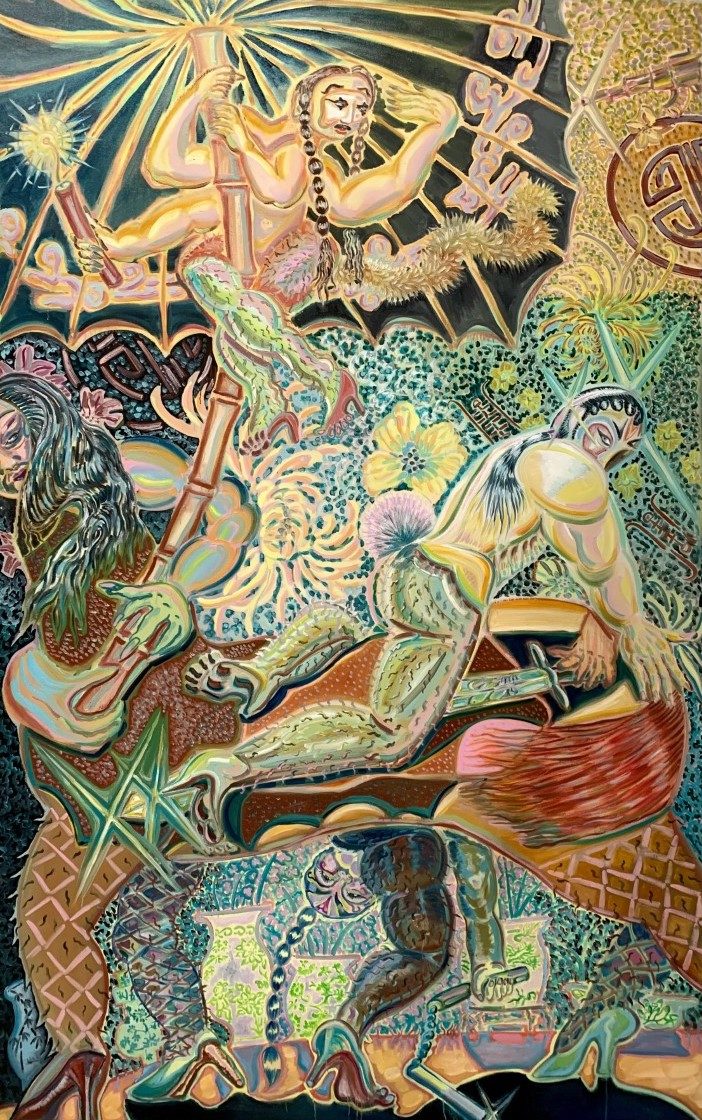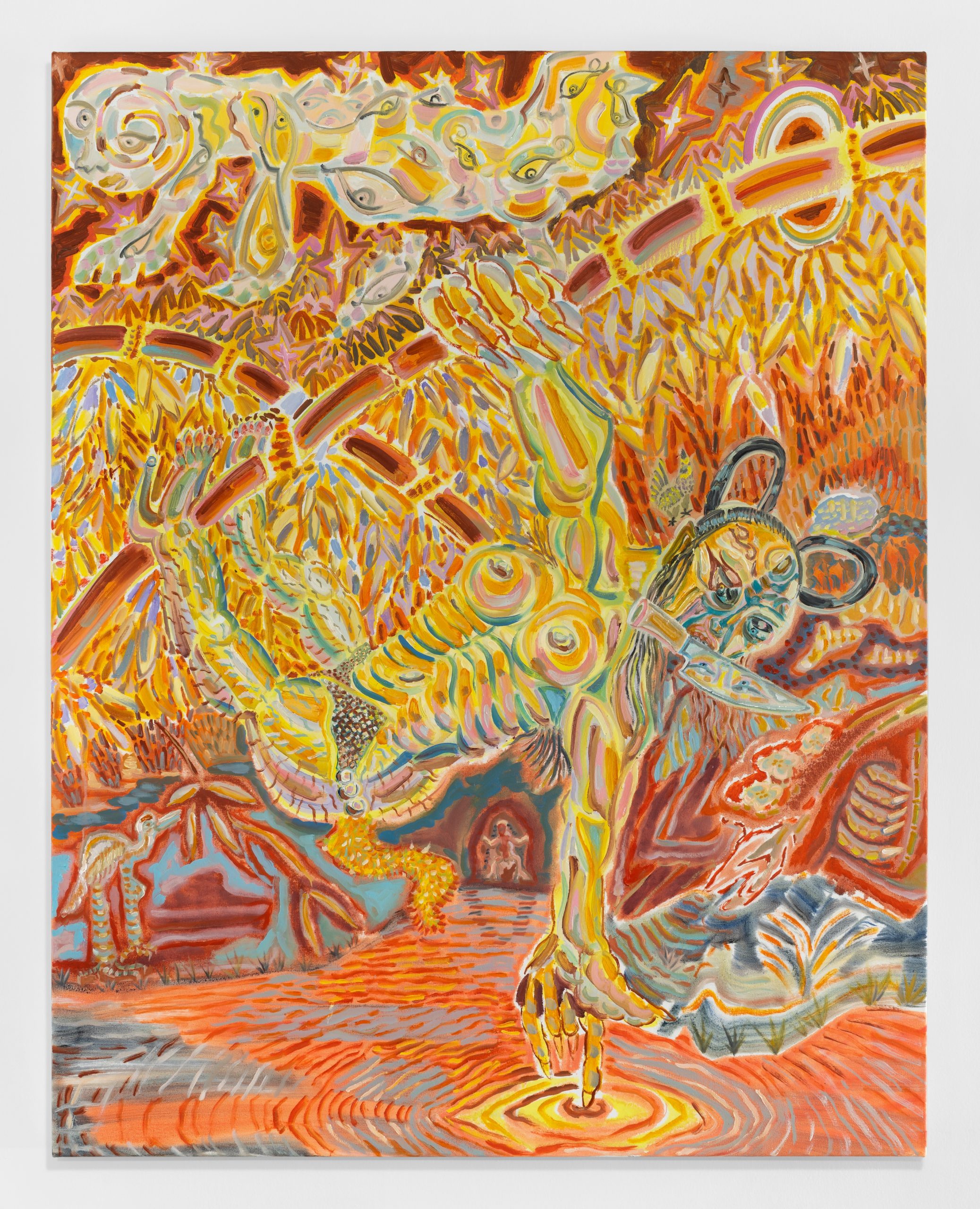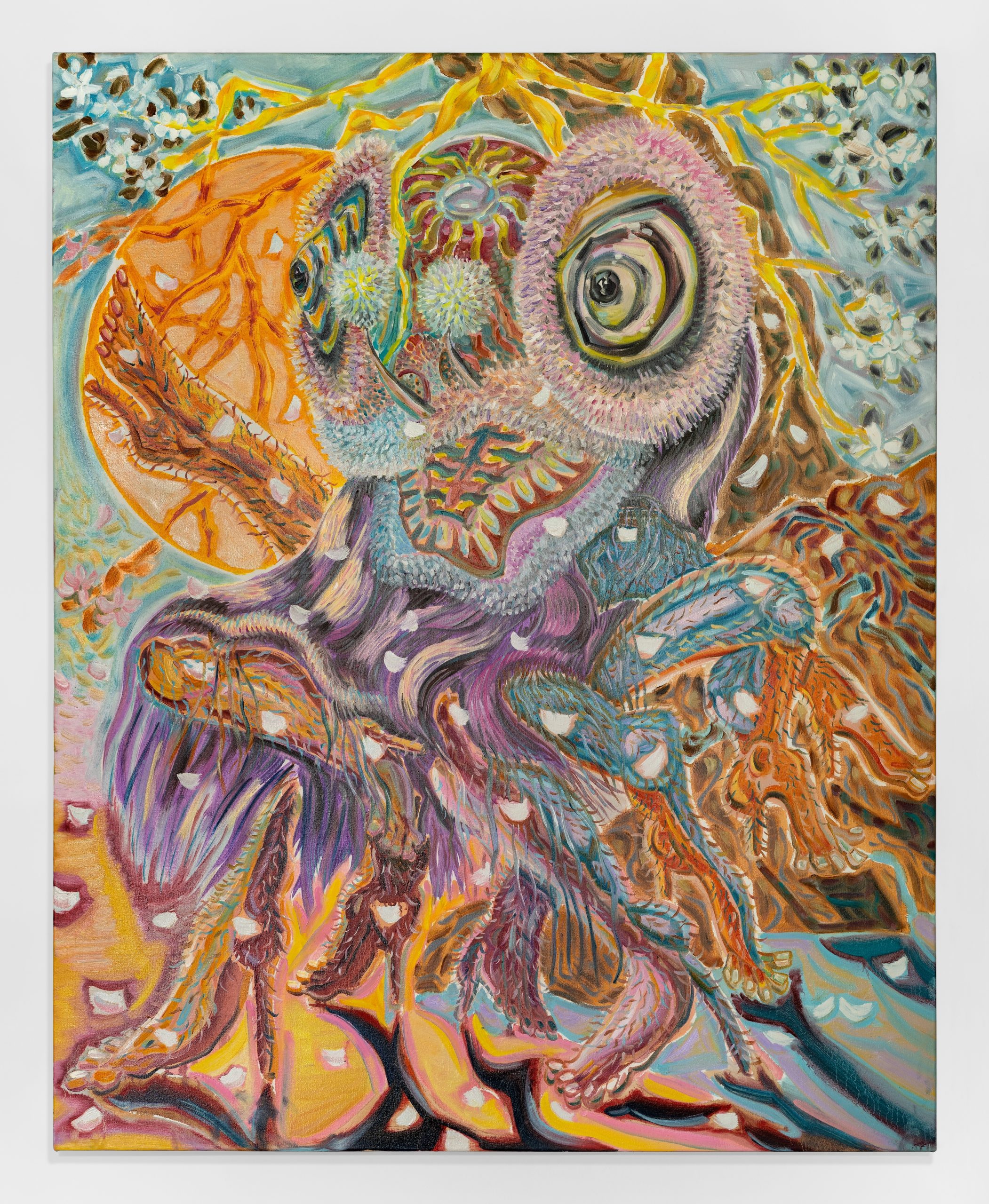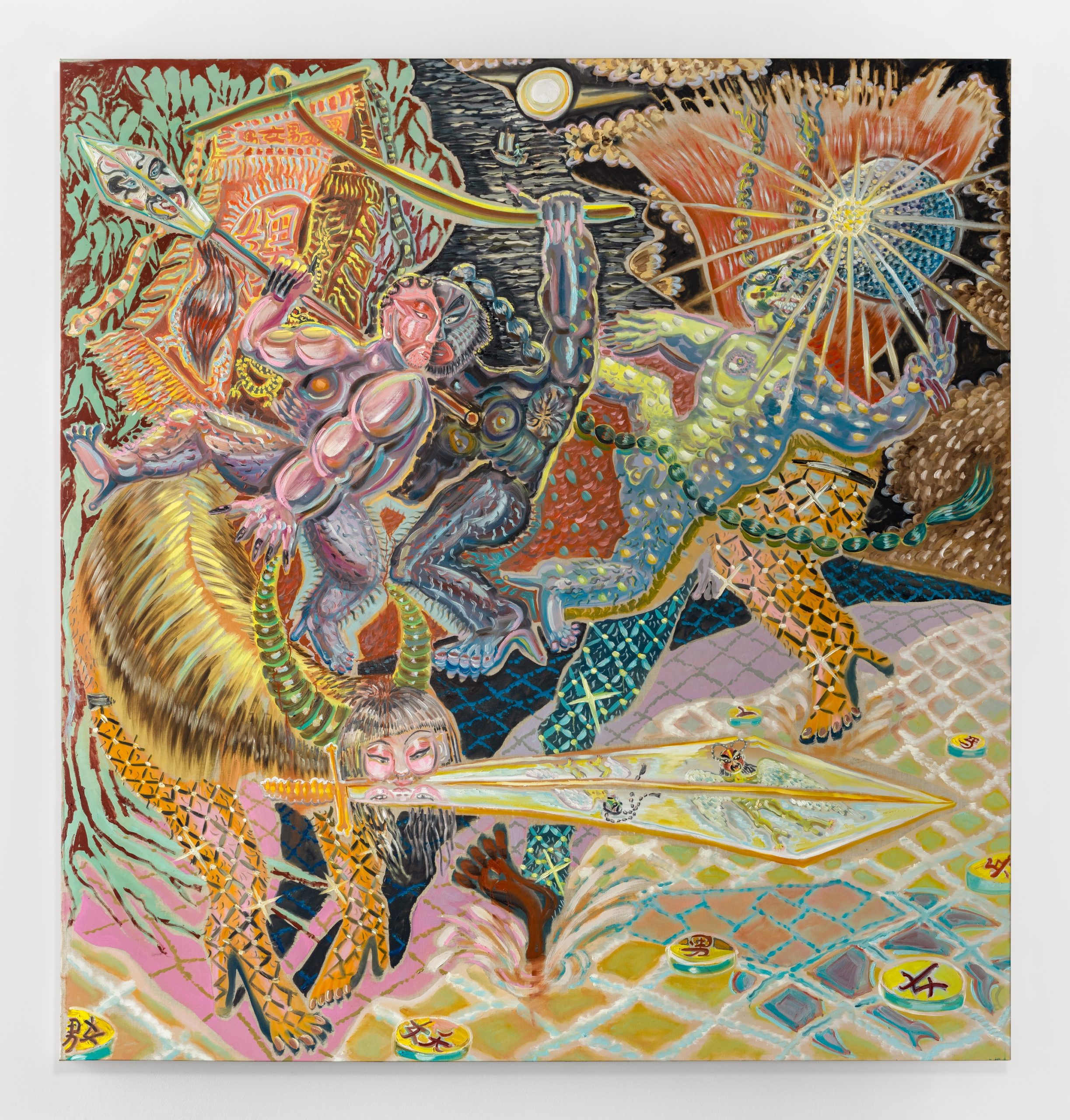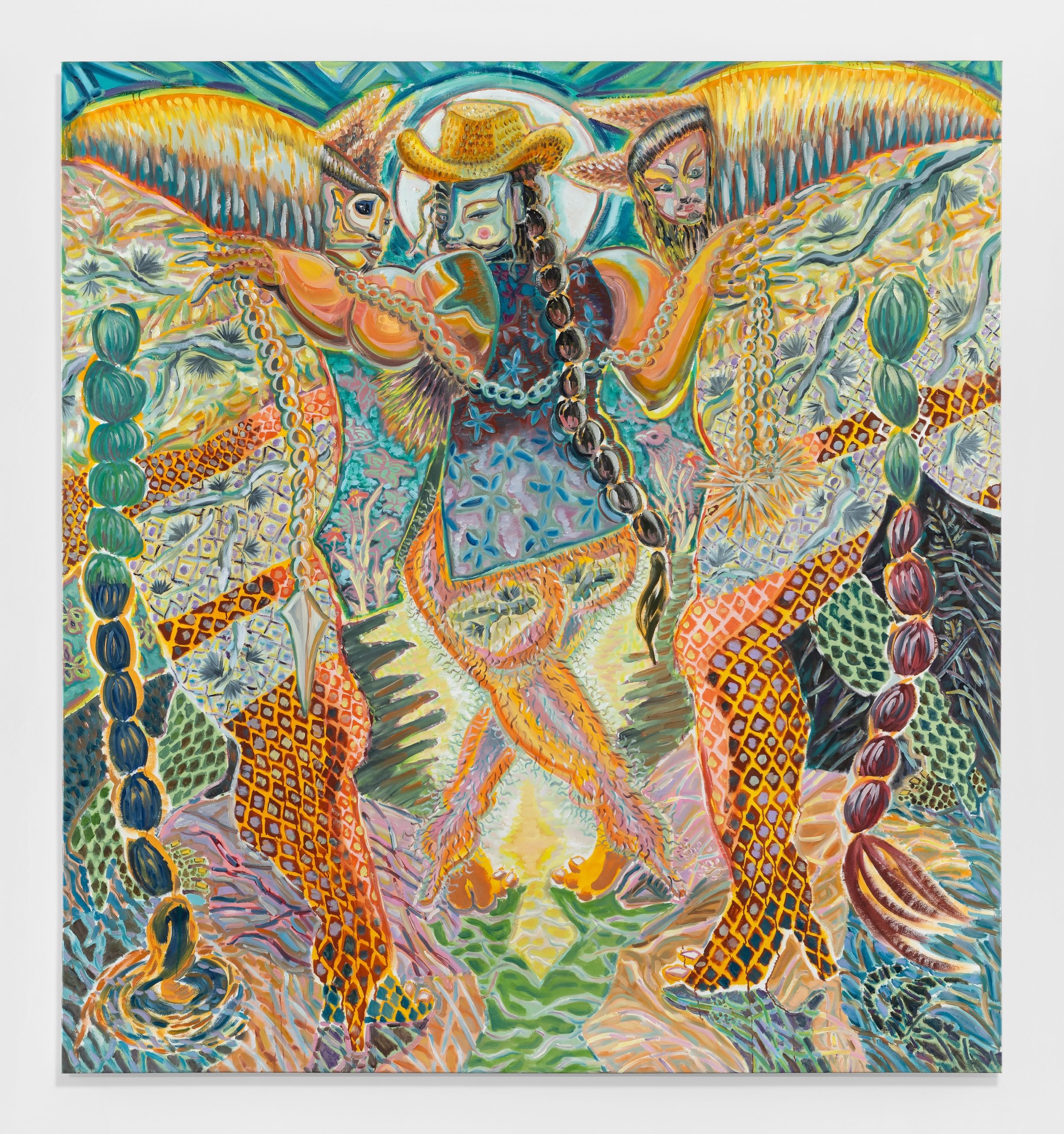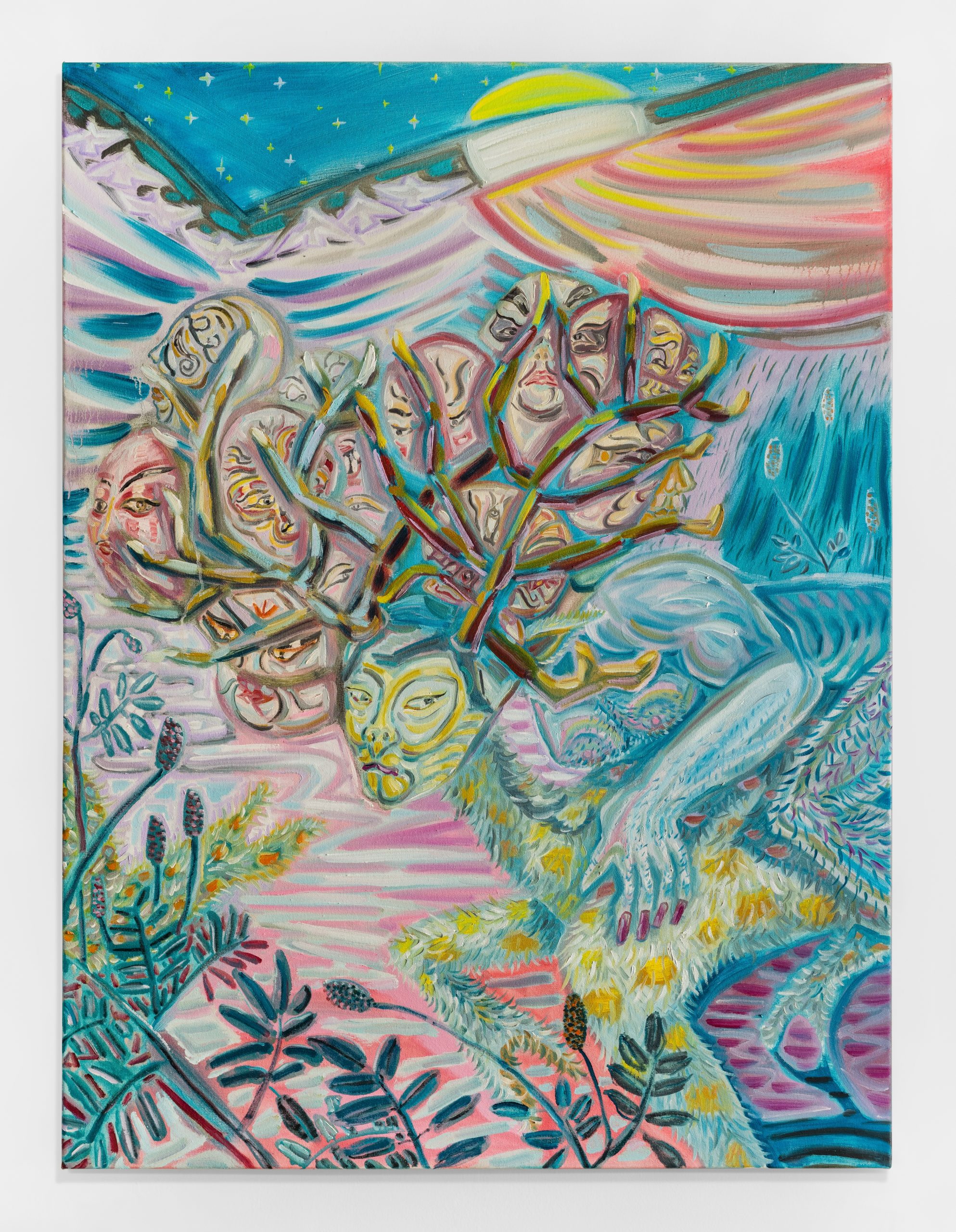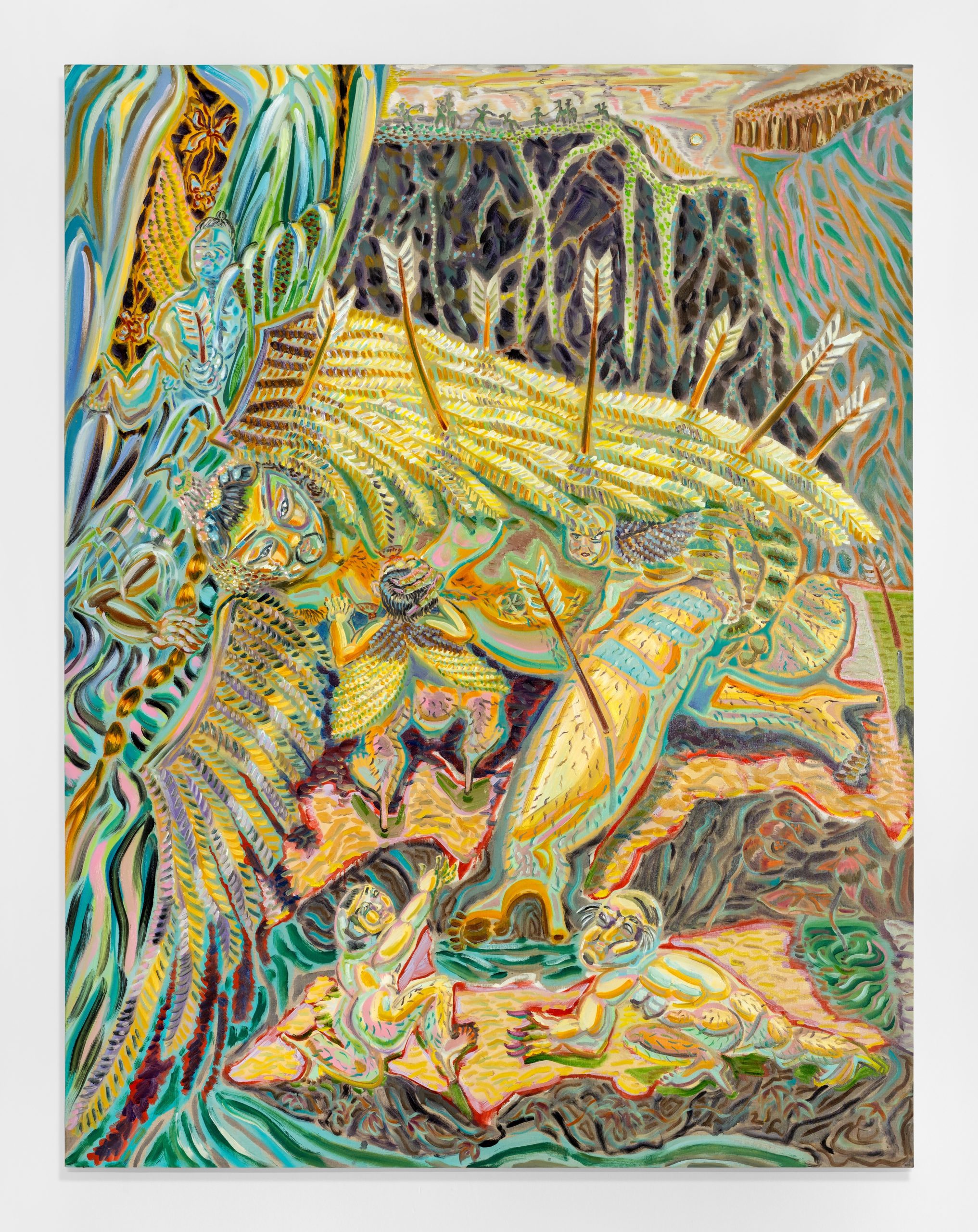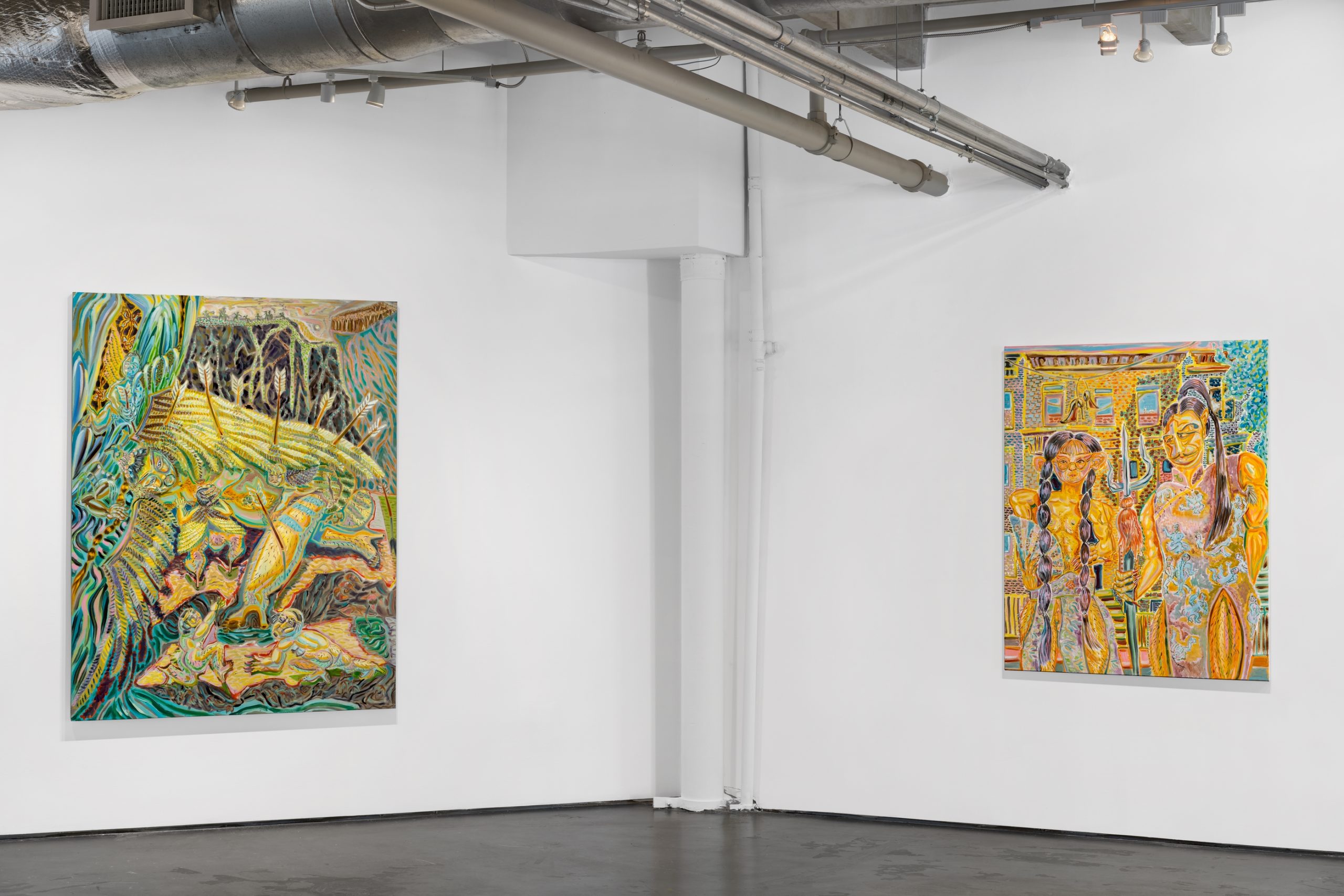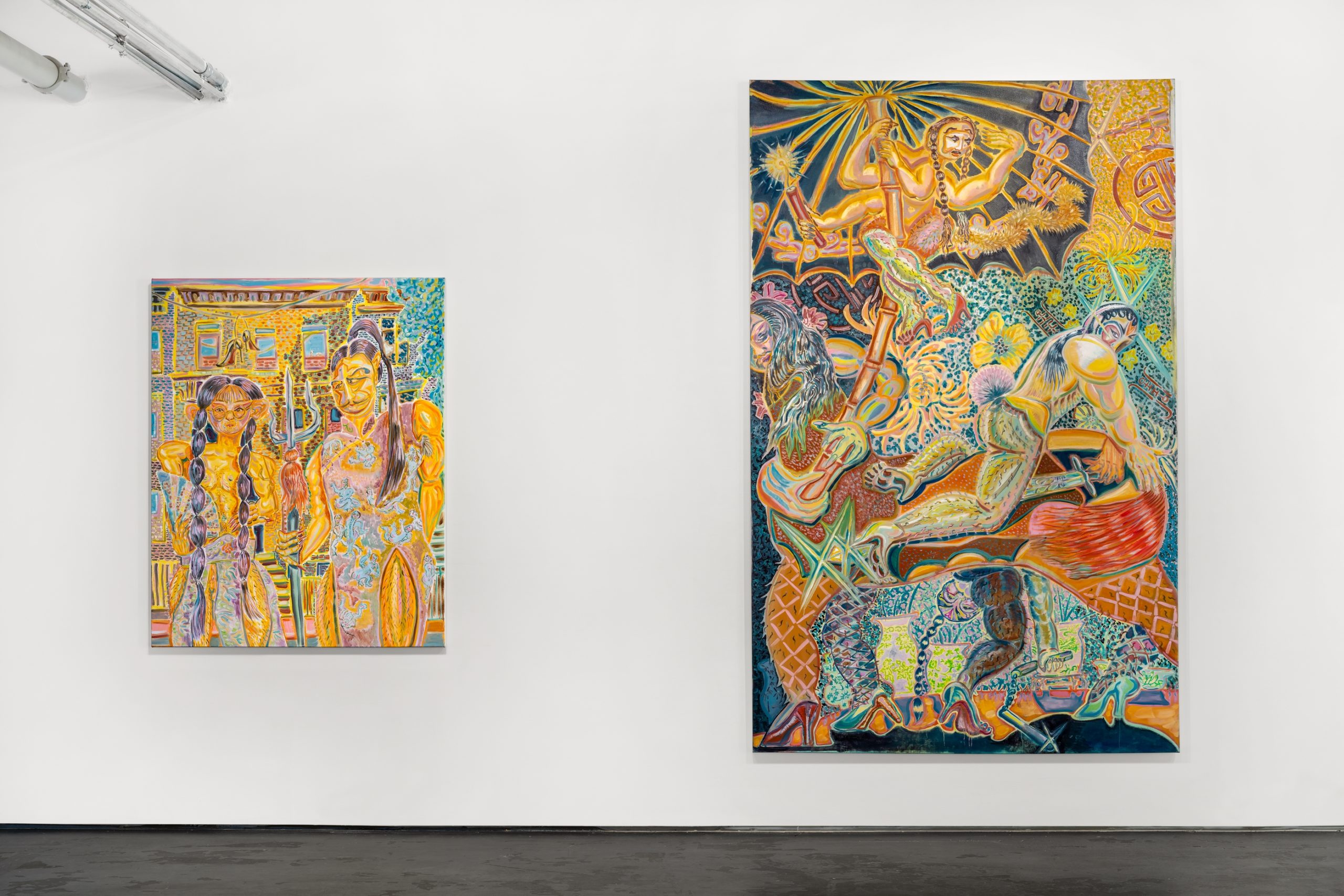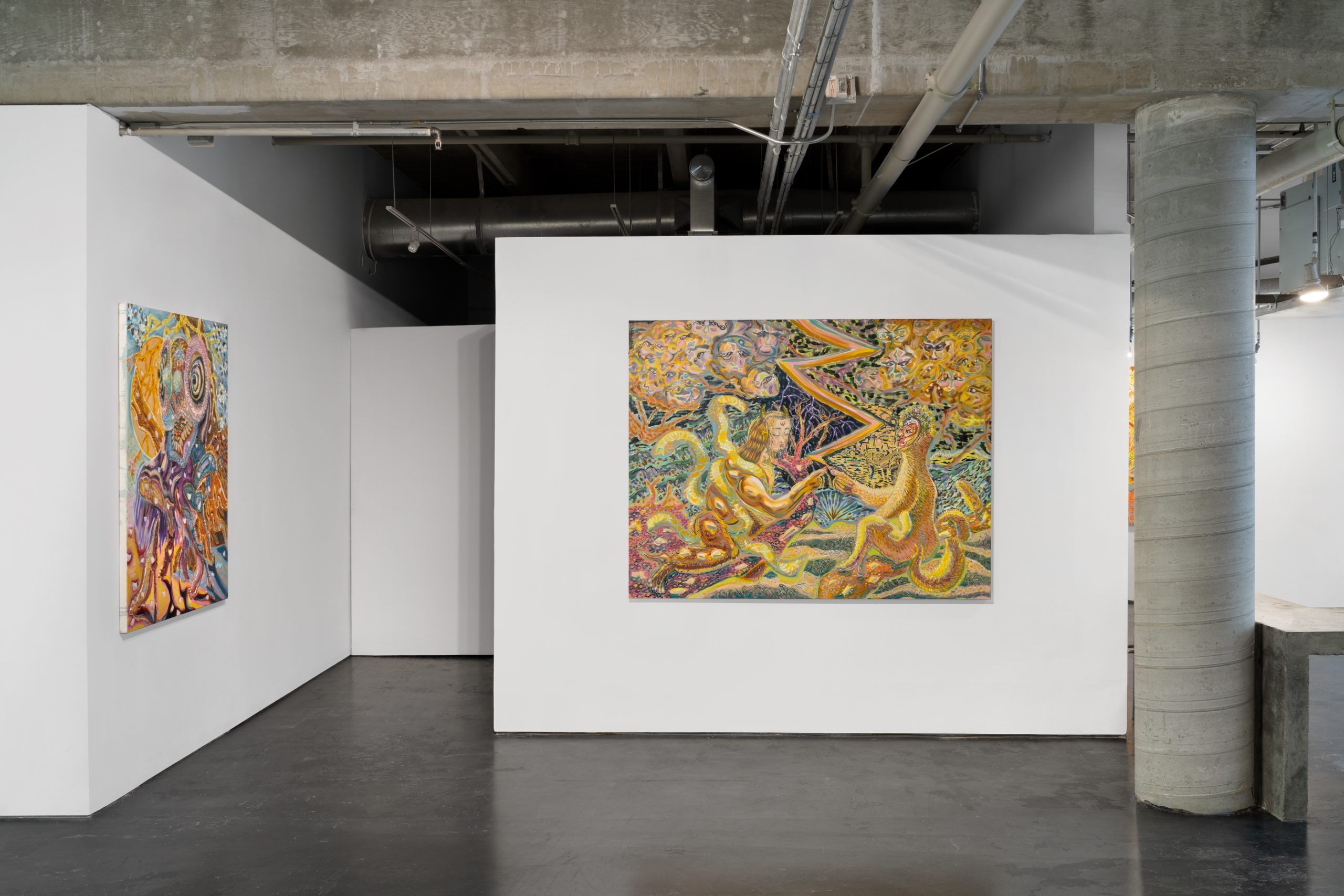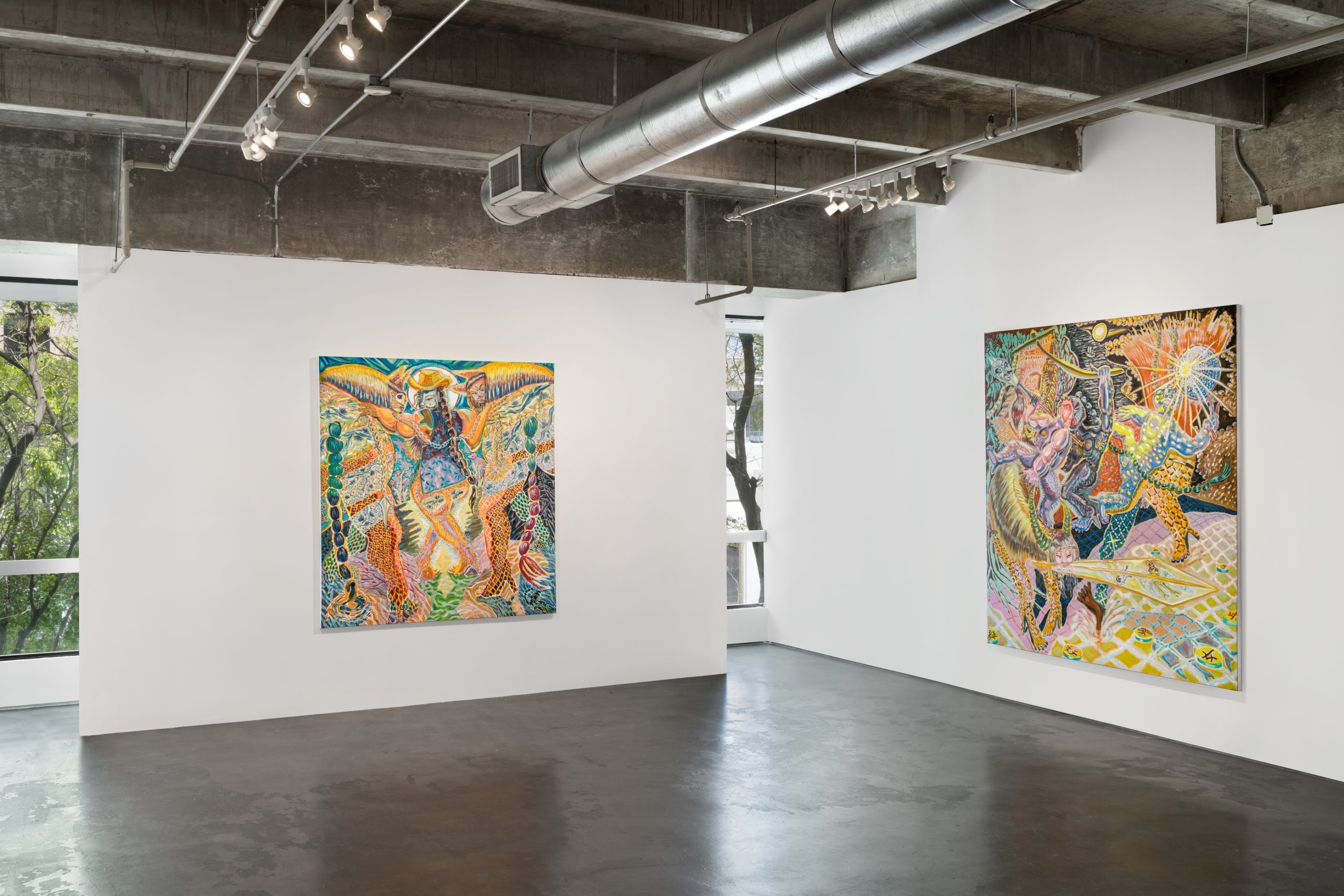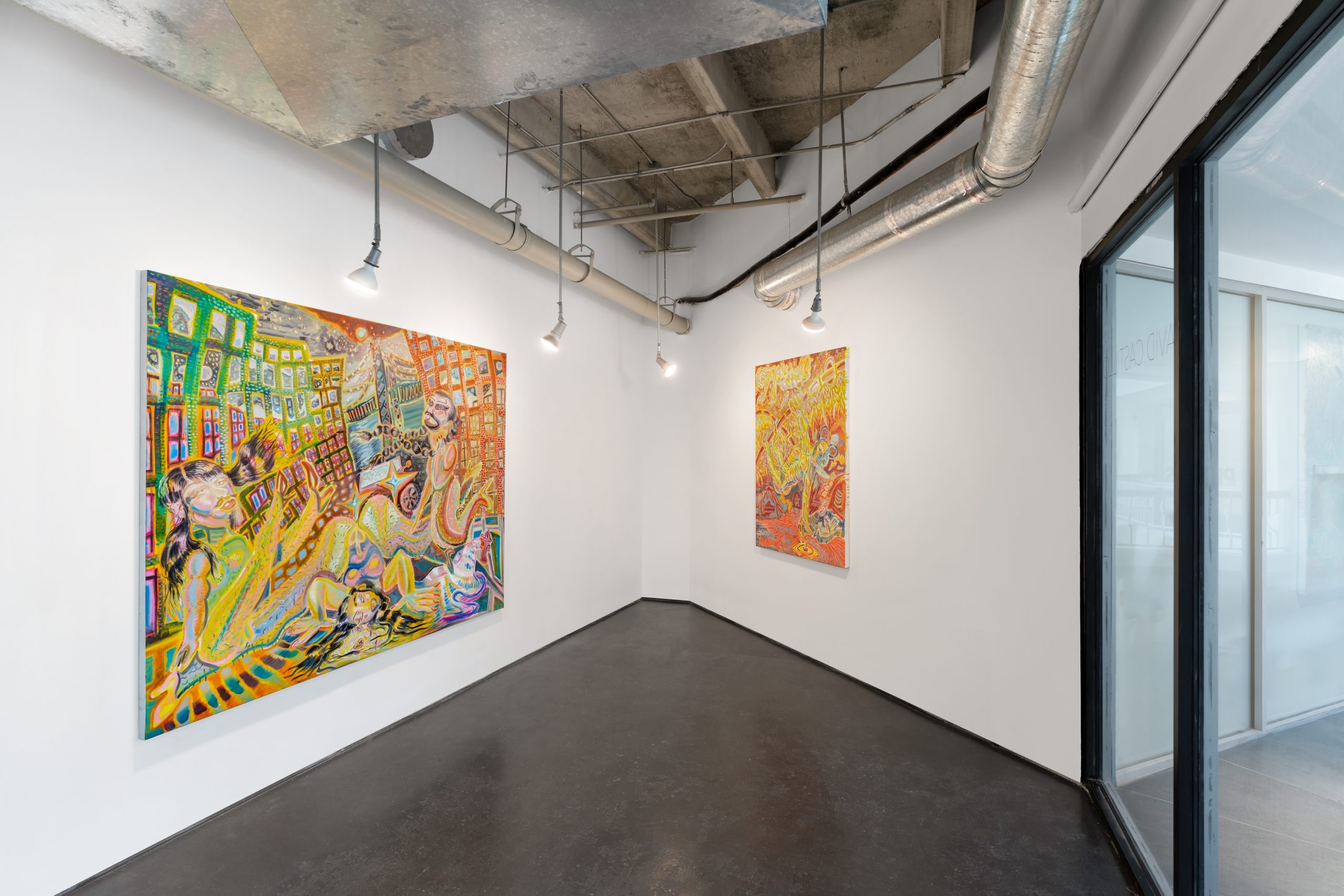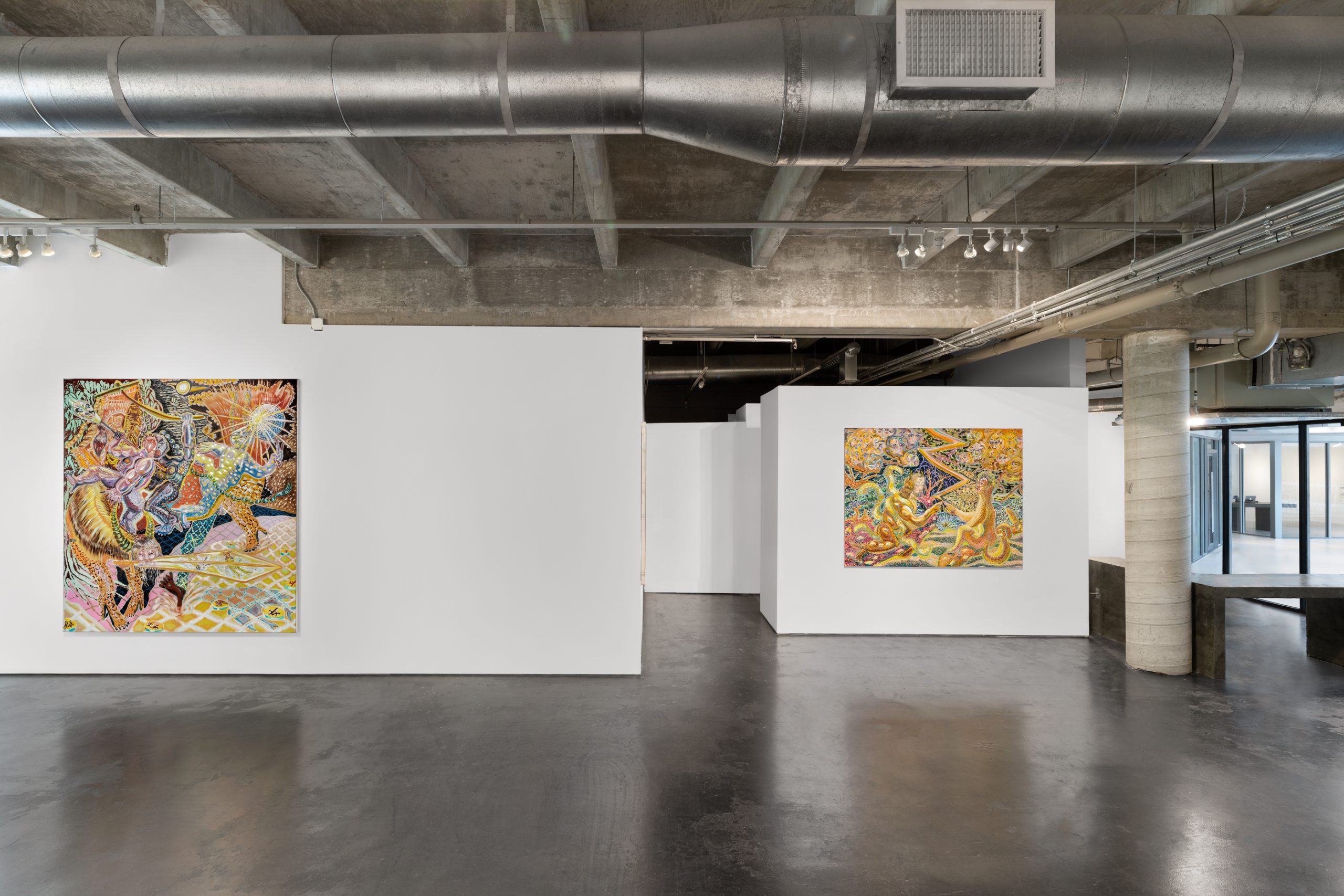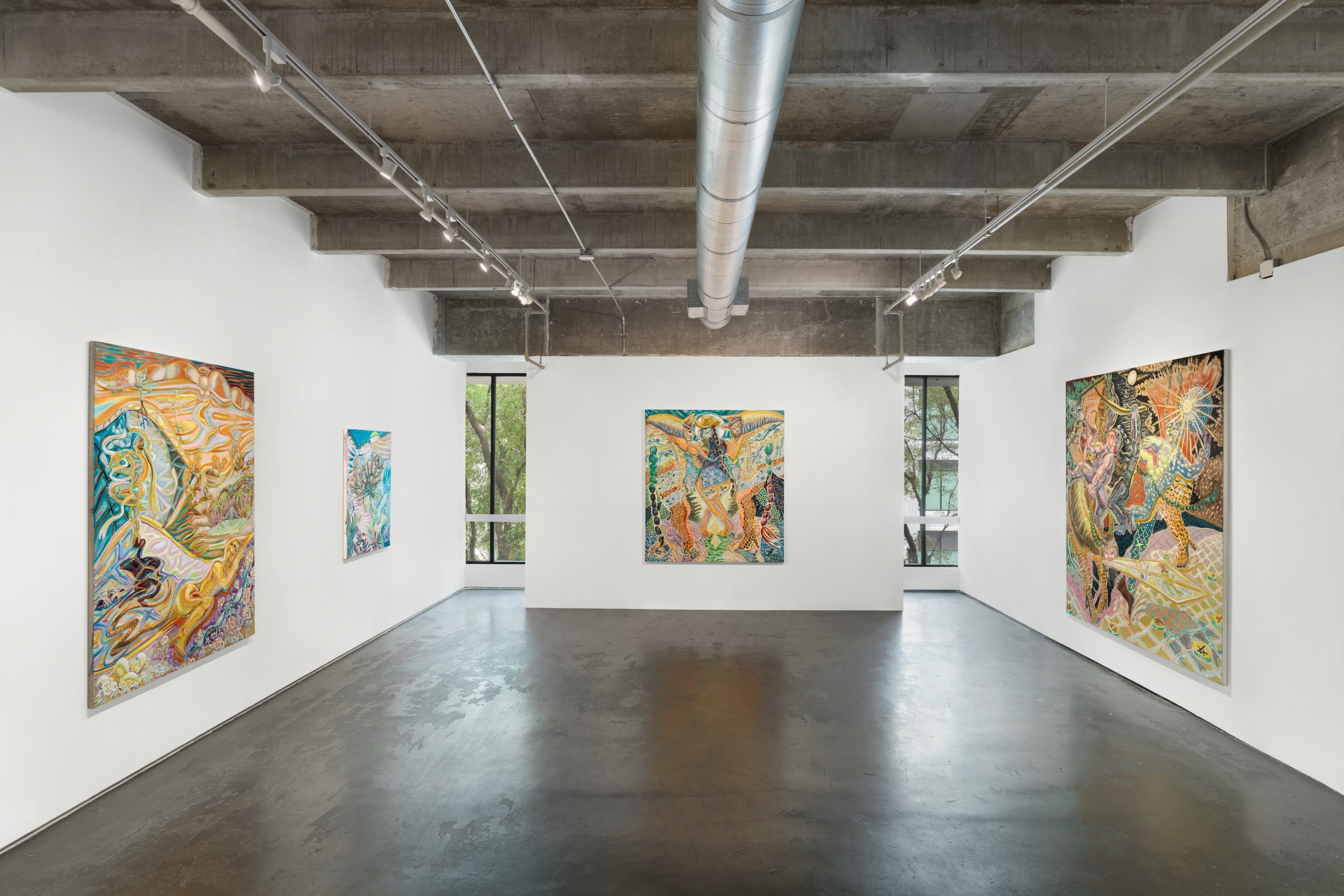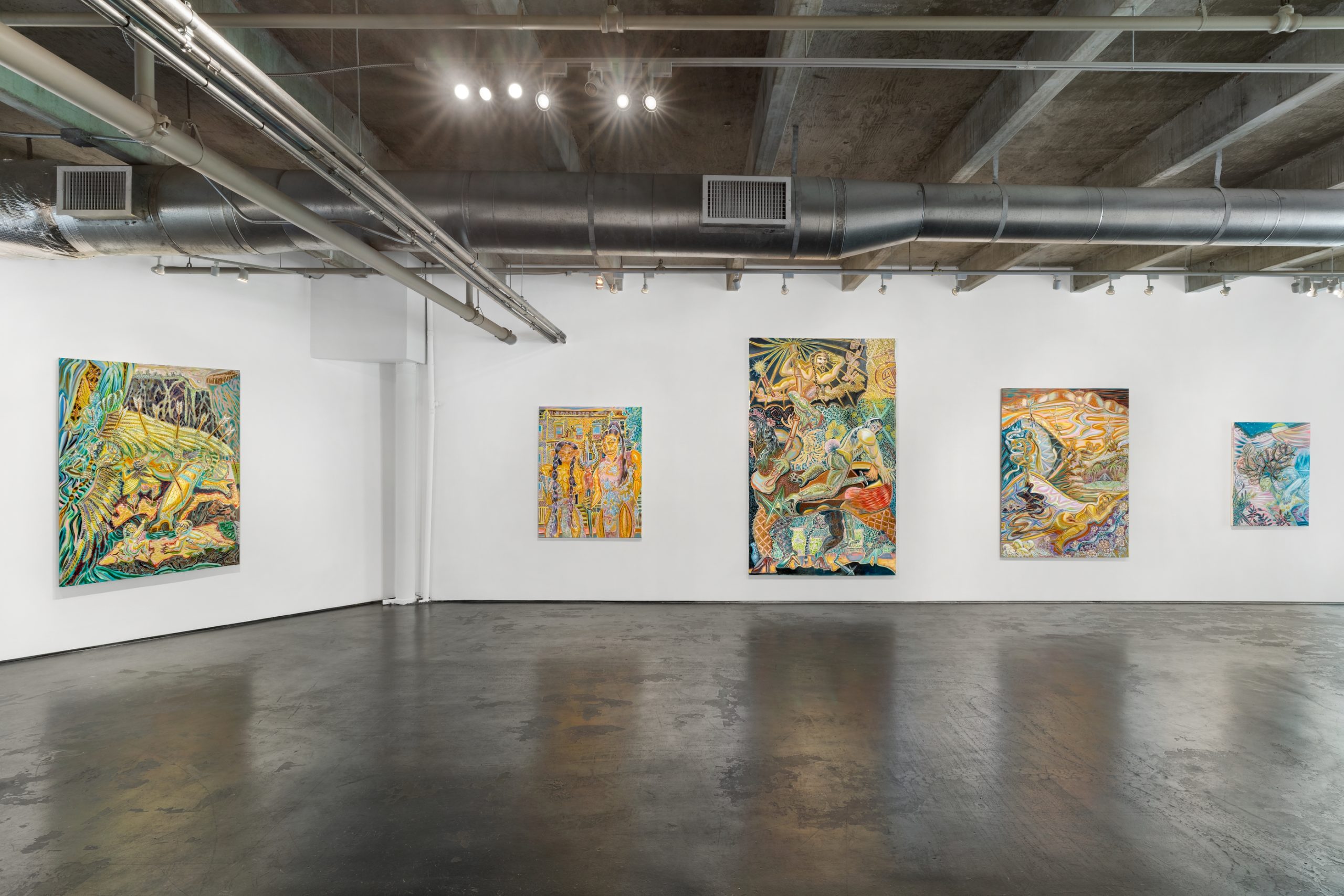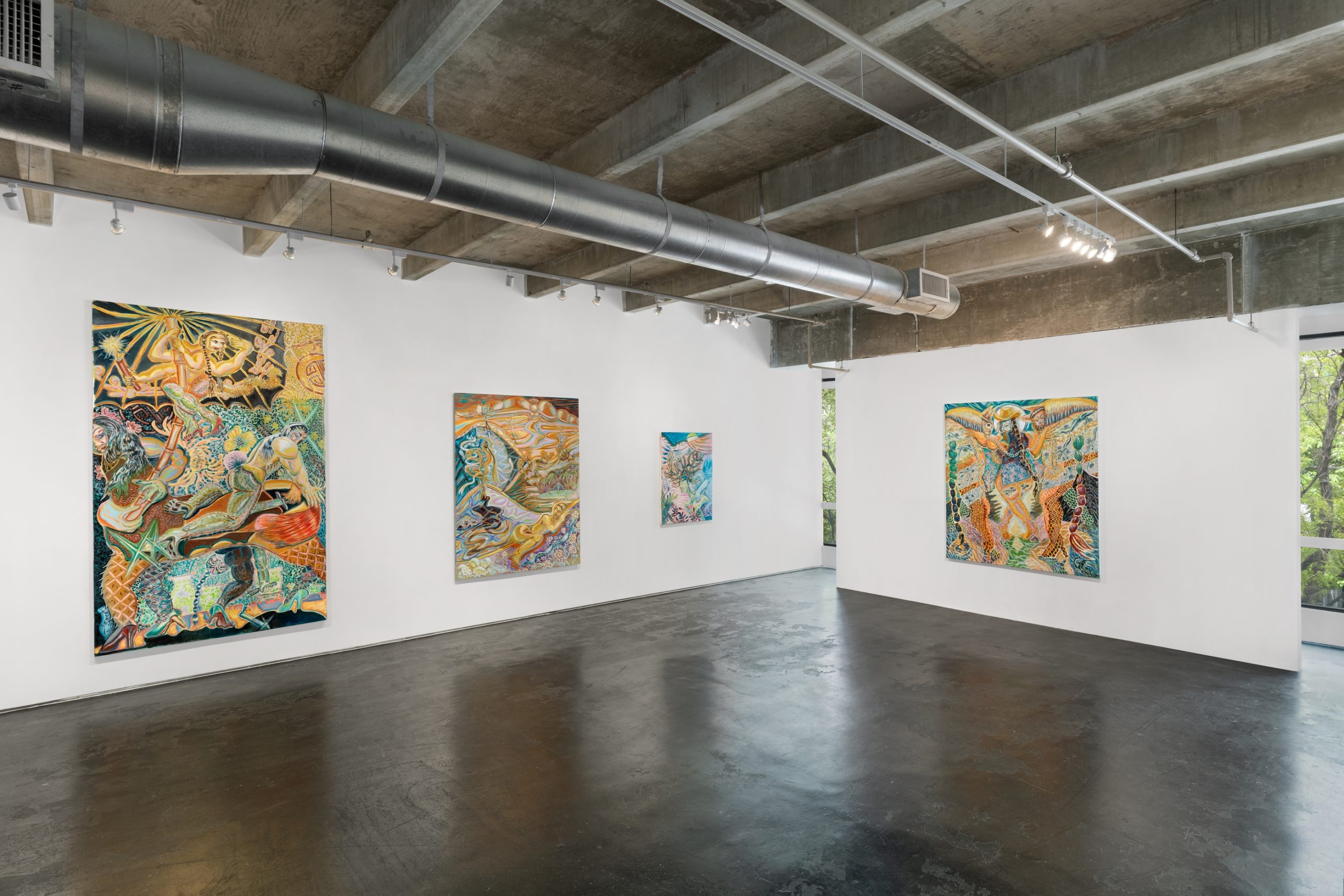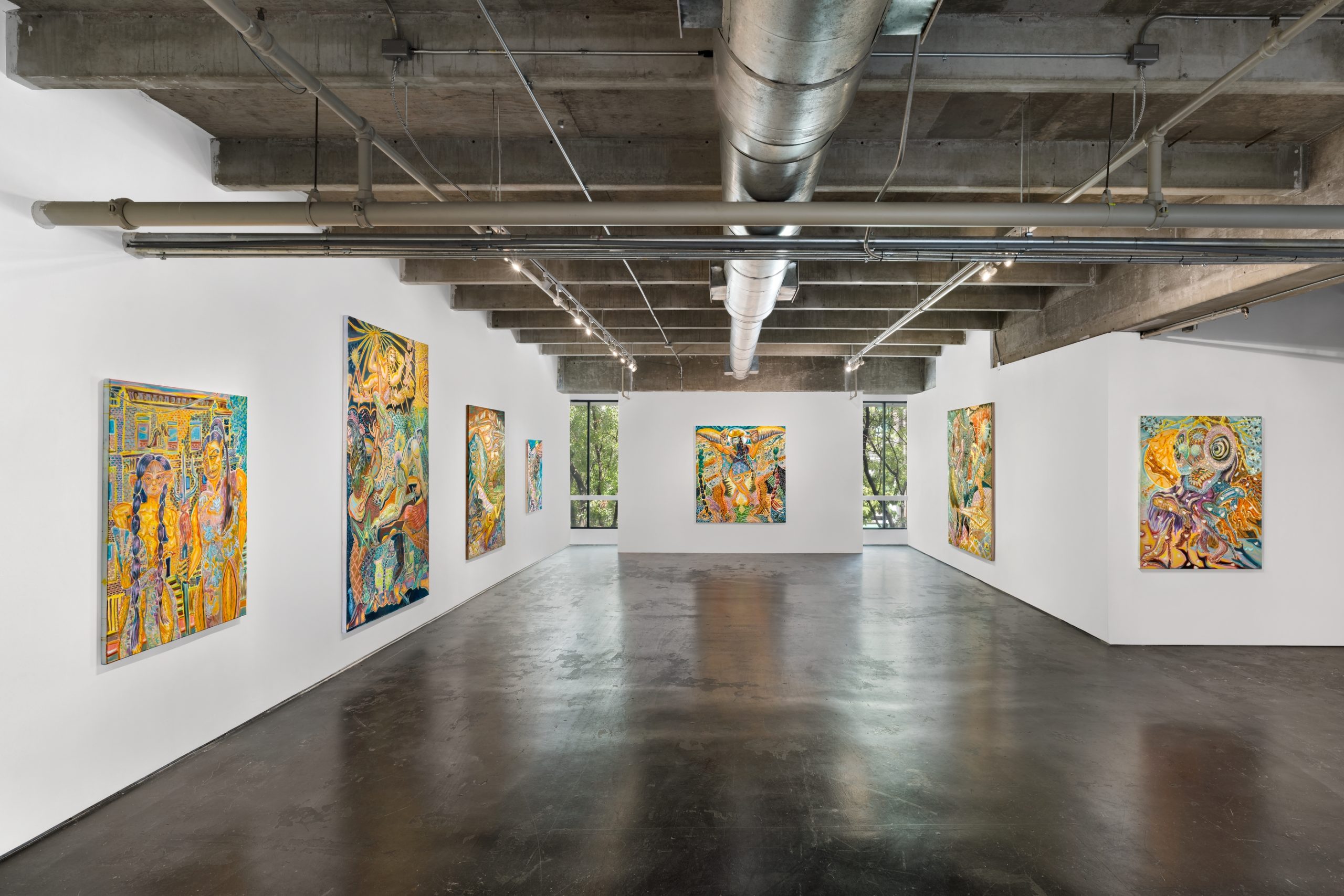Journey to the West
Yesiyu Zhao
Yesiyu Zhao: Journey to the West
David Castillo is proud to present Journey to the West, the second solo exhibition at the gallery of new paintings by Yesiyu Zhao and the artist’s first large-scale solo exhibition.
Journey to the West unfolds fantastical allegories, sociocultural circumstances, and personal histories layered across the expressive compositions of Zhaos’s paintings. Drawing from the iconographies of traditional Beijing opera and pop cultural adaptations of the 16th-century Chinese novel Journey to the West, the artist reassembles these nostalgic symbols to form surreal and playful scenes that reflect his own intersecting identities. Locating himself within this work, Zhao’s paintings contend poetically with questions of representation, the positioning of queer people across history, and the treatment of those considered foreign or ‘other’ within the West. The figures represented in the artist’s works inhabit ambiguous and fluid bodies that refuse to adhere to binaries of gender (feminine/masculine), culture (us/them), and time (then/now), proposing ever flexible and freeing possibilities.
Visions of chimerical beings and mystical trials recur throughout this new body of work, inspiration seeded by cartoons, comics, and other popular media from the artist’s childhood: namely, the 1998 animated series Journey to the West: Legends of the Monkey King as well as other prominent adaptations of the original Ming Dynasty novel. The source material follows the adventures of Monkey—the central figure—and the Buddhist monk Tripitaka on their westward pilgrimage. In the story, Monkey attains immortality through his spiritual training and, as a means of avoiding divine retribution for defying his mortality, he learns to shapeshift into 72 different guises. The character features in Zhao’s paintings across various forms and, for the artist, the physical transformations of Monkey’s body come to represent the multifarious identities contained within an individual; this serves as a powerful metaphor for the queer body, for breaking free from the constraints of dominant structures, and for the many masks marginalized individuals must wear to survive and endure within the majority culture.
Masks, makeup, and other bodily adornments worn by the characters in Zhao’s paintings evoke the costuming of Beijing opera, bringing forward an additional layer of reference to the artist’s country of origin. These beings bear a blend of stereotypically feminine and masculine characteristics—facial hair and breasts, prominent musculature and delicate features—and wear garments that diverge from gendered fashion conventions. A motif that regularly reappears throughout much of Zhao’s work is the hairy leg in fishnet stockings and high heels, a combination of visual elements that defies cultural constructions of gender, drawing from the artist’s own experiences with drag, and testifies to fashion’s liberating potentials. In Journey to the West, the high heels become embedded within the anatomies of many characters as talon-like growths on their feet; this mythical biology plays with queering questions of transformation and deep attachments to forms of self-presentation.
The exhibition’s title makes direct reference to Zhao’s own experience of migration as a Chinese-born resident of the United States. The represented works confront the artist’s feelings of exclusion and his anxieties about never being fully accepted within this chosen home; these sentiments have been amplified over the last several years with increasing anti-Asian xenophobia and violence in the West. The figures in Zhao’s paintings reflect these feelings of alienation and the positioning of those considered ‘other’ within the majority culture. The beings in these works are fantastical in nature and their non-human characteristics—such as their wings—grant them superhuman abilities.
The artist boldly claims a space of belonging through tongue-in-cheek appropriations of American art and history. In the work Howdy Chinks!, a hybrid figure is outfitted in a cowboy hat while wearing makeup from the Beijing opera tradition; in the same work, elements of Western landscapes and Chinese genre painting coexist within the composition. In another painting, American Chinese Gothic, Zhao reimagines Grant Wood’s American Gothic as Monkey and Tripitaka from Journey to the West. The crossing of these national symbols becomes an avenue through which the artist empowers himself to claim a place within both cultures.
Across richly layered metaphors, the works in Journey to the West chart trials and transits of self-discovery, self-acceptance, and belonging set against the backdrop of a society that does not fully embrace those who embody identities that cannot neatly fit within conventional categories.
Yesiyu Zhao (b. 1991, Zhejian Province, China) lives and works in Brooklyn, New York. Zhao is the most recent artist added to the roster of David Castillo. His boundary-pushing paintings have garnered increased attention following Split at David Castillo, his debut solo exhibition; and Unsettled Bodies, the gallery’s two-person presentation for Art Basel OVR Portals where Zhao’s painting River Dress was selected as a Curator’s Pick by Christina Li. Zhao has participated in the Visual Arts Residency at Chautauqua Institution, NY (2017) and the Summer Residency at the School of Visual Arts (2015). The artist’s works have been included in exhibitions at the de la Cruz Museum, Miami; Christie’s, New York; the Strohl and Fowler-Kellogg Art Center, Chautauqua, NY; among others. His paintings are in the collections of the Institute of Contemporary Art, Miami; the de la Cruz Museum; and the collection of Craig Robins, Miami, among many others. He received his BFA from the School of Visual Arts (2018) and his MFA from SUNY Purchase College (2020).
